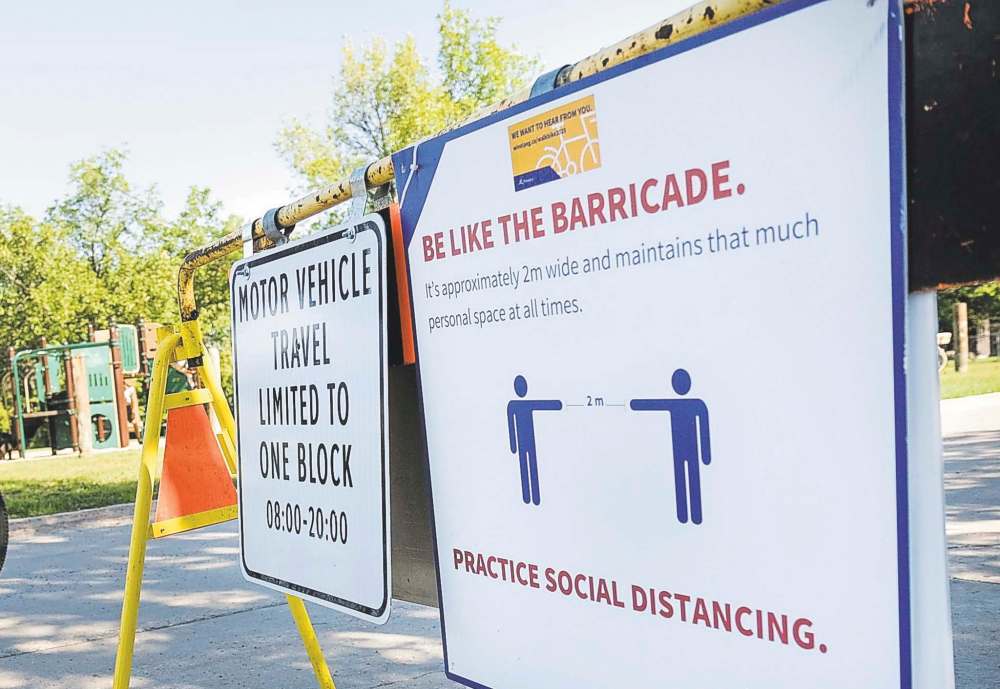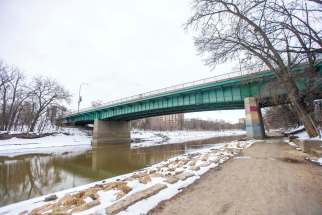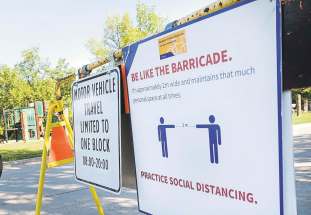A step backward for Open Streets initiative
Read this article for free:
or
Already have an account? Log in here »
To continue reading, please subscribe:
Monthly Digital Subscription
$0 for the first 4 weeks*
- Enjoy unlimited reading on winnipegfreepress.com
- Read the E-Edition, our digital replica newspaper
- Access News Break, our award-winning app
- Play interactive puzzles
*No charge for 4 weeks then price increases to the regular rate of $19.00 plus GST every four weeks. Offer available to new and qualified returning subscribers only. Cancel any time.
Monthly Digital Subscription
$4.75/week*
- Enjoy unlimited reading on winnipegfreepress.com
- Read the E-Edition, our digital replica newspaper
- Access News Break, our award-winning app
- Play interactive puzzles
*Billed as $19 plus GST every four weeks. Cancel any time.
To continue reading, please subscribe:
Add Free Press access to your Brandon Sun subscription for only an additional
$1 for the first 4 weeks*
*Your next subscription payment will increase by $1.00 and you will be charged $16.99 plus GST for four weeks. After four weeks, your payment will increase to $23.99 plus GST every four weeks.
Read unlimited articles for free today:
or
Already have an account? Log in here »
Hey there, time traveller!
This article was published 15/04/2021 (1701 days ago), so information in it may no longer be current.
The Open Streets pilot project appears to have been too good to be true for city pedestrians.
The concept for seasonal active transportation across Winnipeg that began in 2020 restricted motor vehicles to travel for only one block on 10 different routes every day from 8 a.m. to 8 p.m. in the spring, summer and fall, allowing for cyclists and pedestrians greater and safer access.
It was a pandemic-inspired expansion of a similar plan that had been in use for many years on summer weekends on Wellington Crescent and Wolseley Avenue.
Open Streets proved to be welcome relief for Winnipeggers stuck at home during the COVID-19 crisis. Walking or pedalling on Churchill Drive or Scotia Street along the Red River, or Egerton Road beside the Seine River, became a way to get some fresh air and exercise while enjoying the city’s scenery without having to dodge a procession of trucks and cars.
The concept allowed for physical distancing for pedestrians, keeping sidewalks from getting crowded and becoming potential pandemic hotspots.
City staff reminded councillors that allowing pedestrians to use roadways that have “reasonably passable” sidewalks, such as Wolseley Avenue and Wellington Crescent, contravenes the province’s Highway Traffic Act.
The city’s public works committee will vote Friday on a proposal to extend the pilot project for a second year. If it receives approval from city council, it would begin May 3 on 14 streets around the city.
While the cycling aspect of Open Streets is expected roll on, the pedestrian part of the plan has stepped squarely into an administrative mud puddle.
On Monday, city staff reminded councillors that allowing pedestrians to use roadways that have “reasonably passable” sidewalks, such as Wolseley Avenue and Wellington Crescent, contravenes the province’s Highway Traffic Act.
They recommend pedestrians be excluded from these “enhanced summer cycling routes,” and should stick to sidewalks. However, crowding on sidewalks remains a COVID-19 concern, especially considering new information regarding outdoor transmission of the virus’s highly contagious variants.
Excluding pedestrians from Open Streets flies in the face of the reasoning that launched the project in the first place.
Apparently, the city either didn’t know about the provisions in the Highway Traffic Act or overlooked them when it gave the project the go-ahead last year. Public works director Jim Berezowsky said the city was looking out for Winnipeggers’ best interests when it launched the Open Streets project during 2020’s state of emergency. A year later, a provincial state of emergency remains in place, but legalities seem to have forced pedestrians’ best interests to take a step back.

The recommendation also fails to recognize that pedestrians have walked on Wellington Crescent and Wolseley Avenue for years when similar rules restricted motor vehicles on weekends.
Excluding pedestrians from Open Streets is bound to create resentment in those who strolled or jogged on those streets last year. They will no doubt be struck by the irony of a provincial act intended for motorists adding restrictions to those who choose to travel on foot.
City officials are lobbying the province to amend the HTA to allow for Open Streets’ pedestrian plans, but legislative procedures, including a new bill and debates, are rarely as simple as a walk in the park.
The city can put its best foot forward by seeking a temporary measure from the province that would allow both cyclists and pedestrians to use Open Streets’ designated roads this year while providing motorists the restricted one-block access to the streets.
It would give city councillors and administration more information on whether Open Streets could become a permanent feature of Winnipeg summers, and grant pedestrians another opportunity to enjoy one of the few improvements on city life the pandemic has presented.








